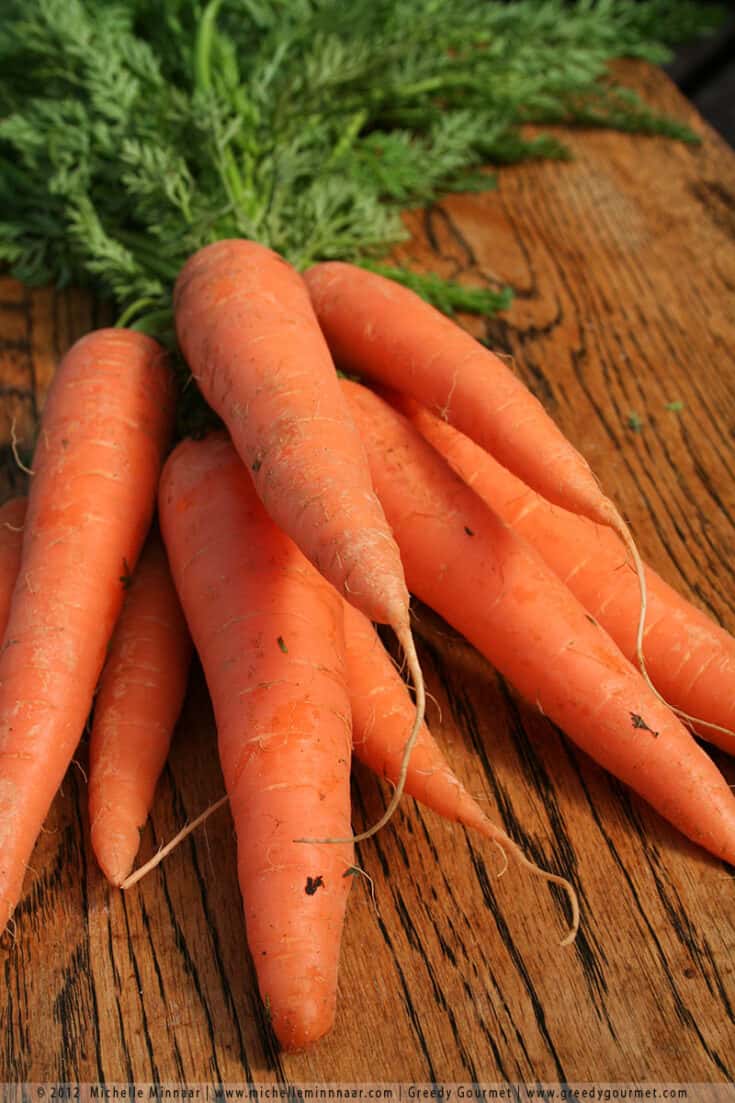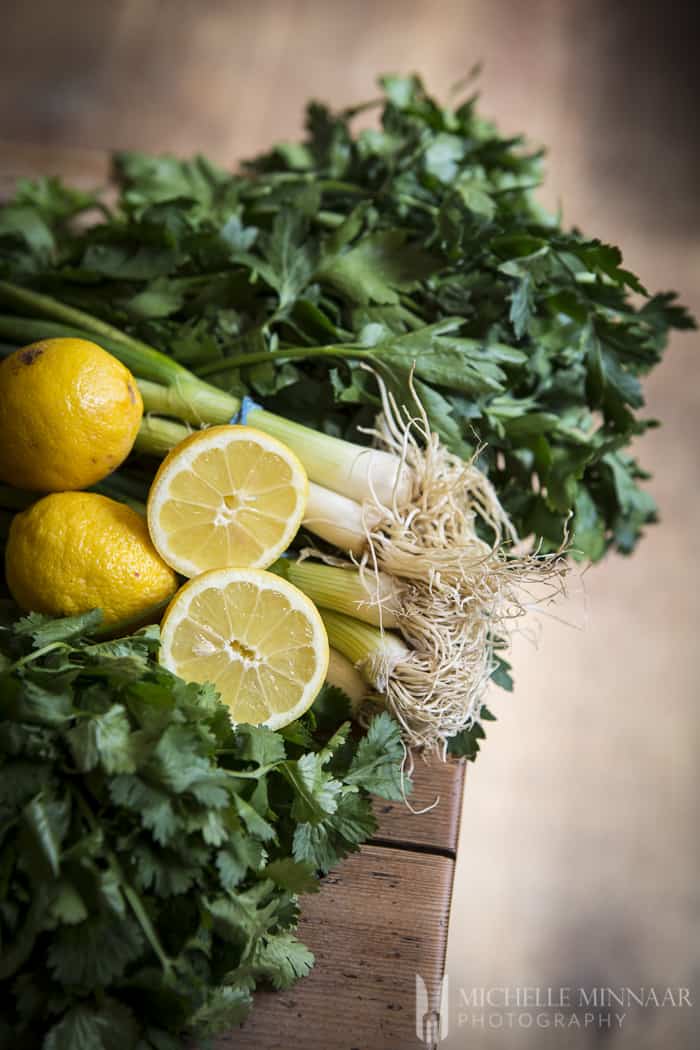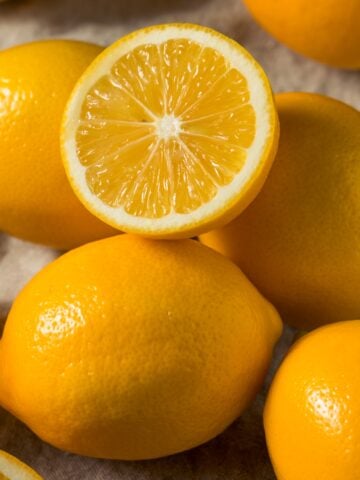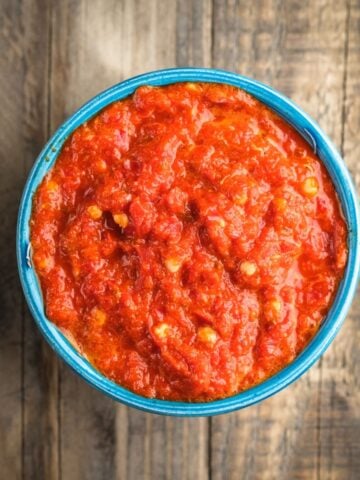Parsnip is a cream-colored root vegetable that looks like a carrot and has a sweet taste.
This winter vegetable is easy to use and tastes great in many different recipes, but sometimes you may want a substitute for parsnips. If that’s the case, here are the best parsnip substitutes.

What is a Root Vegetable?
Root vegetables are vegetables that are grown underground. They absorb nutrients from the soil, making them ultra-healthy and flavorful.
They are great in roasted dishes, and many of them have an earthy flavor, crunchy texture, and a mild flavor.
Can parsnips be eaten raw?
Yes, you can eat raw parsnips. They can be eaten similarly to carrots.
Would you like to save this?
The 12 Best Parsnip Substitutes
Are you looking for a parsnip Substitute? In this comprehensive list you'll learn 12 ideas for an alternative.
Sweet potato is a root vegetable with an orange color and a similar texture to a regular potato. Sweet potato has a sweet taste, as its name indicates, and is often used in place of potato for similar recipes like a mash or fries.
They can be roasted, fried, purée, or sautéed. You can really do anything with them.
If you want to use sweet potatoes to replace parsnip, use them in recipes where they are eaten uncooked. They have different flavors and different colors, but they’ll have a similar texture when raw.
Celery root, also known as celeriac, is not the same as celery. And it is not the root of a celery stock. It is a bulbous root with a white inside that can be peeled and eaten in soups and stews, or even raw.
Celeriac is traditionally considered a winter vegetable, and after a little peeling, it is quite easy to manage. Celeriac has a nutty taste and can be used as a substitute for parsnips in mashes or in a side dish where you’re using a medley of vegetables or are roasting them.
Celery root is a good substitute for parsnip for many different dishes, whether it’s raw or cooked. The two have a similar crunchy texture, but parsnips are a bit sweeter than celery root, so note that when you are cooking anything with a sweetener.
Another great root vegetable that you could use in place of parsnips is jicama. This veggie is white on the inside. It’s almost like a cross between an apple and a potato, as it tastes like apples but has the texture of a spud.
Jicama has a lot of health benefits, like vitamins and antioxidants, and can be eaten raw or cooked. It tastes sweet plain, but it does a good job of taking on other flavors, so it’s a really versatile root vegetable that doesn’t get used that often. It can be used in place of parsnips in raw recipes or cooked.
Jicama does have a fruitier flavor than parsnips, so make sure you note that in your recipes. You may want to use it in recipes that are looking for something fruity, like a salad or a stir fry.
We’re all very familiar with the potato. There are loads of different kinds, and they are one of the most versatile foods on the planet. Parsnips and potatoes can actually be used in very similar ways.
Instead of mashed potatoes, you can mash parsnips, or you can include parsnips in your mash. Potatoes are great with other veggies and vegetable soups, alongside roast beef, or eaten with an orange carrot, and so are parsnips.
You can really use the two interchangeably, making potatoes one of the best foods to substitute parsnips.
Salsify, or oyster plant, is dark on the outside, but on the inside, it is a cream-colored root veggie. Salsify has a very similar look to parsnips, and, as suggested by its alternative name, has an oyster-like taste, which is why it is called oyster plant.
This vegetable is great to replace parsnips because it can be used in a variety of ways. It can be stir-fried, mashed, put in stews or soups, eaten and salads, or even sautéed.
If you haven’t ever tried a white carrot, you need to whether you are using it to replace parsnips or not.
White carrots look almost identical to parsnips because of their color, but they are indeed a carrot, they just lack pigmentation.
White carrots are very healthy and can be consumed and cooked with just like a regular carrot. They have a mild flavor and a sweet flavor that makes them more appealing than orange carrots to some.
Orange carrots, which are sometimes in the form of baby carrots, are a vegetable we’re all familiar with. They have an earthy taste and sometimes a bitter taste, but they're a very healthy vegetable that can be used in so many ways.
They’re very easy to swap out with parsnip recipes because of their similar texture. They do differ in taste, though, so note that if you are going to use them raw.
However, roasted parsnips and roasted carrots both have a sweet flavor, so carrots are a good alternative for parsnips in roasted recipes.
Turnip is a white and purple bulbous vegetable that comes from the ground. Turnips are crunchy when raw, and, like most other vegetables in its family, take on a softer texture when they cook.
A turnip can be used in place of parsnips in many recipes due to the slight sweetness.
A radish is a tiny little vegetable with a red outside, white inside, and peppery flavor. These bite-sized healthy vegetables are most often eaten plain or found in salads, but they can be roasted or put in soups and stews.
If you prefer a pepper taste to a sweet taste, radishes would be a good substitute for parsnips.
Another underutilized vegetable is the rutabaga. Unfortunately for rutabaga, this is not the most appetizing vegetable, which could be partially responsible for its rather dismal reputation, but rutabagas are actually really wonderful.
They have a buttery taste and can be used like you would any of its similar vegetables. You can use it instead of parsnip in lots of recipes, and it is an excellent parsnip substitute if you do not like the parsnip taste.
Kohlrabi is a type of cabbage. It’s sweet and peppery and has the texture of a broccoli or cauliflower stem. It’s softer than a parsnip, but it is still a good substitute, especially if you don’t want to have such a distinct flavor that a parsnip gives.
Kohlrabi can be cut up and eaten raw, cooked, puréed, and prepared in many other ways. It is an easy vegetable to manage and a good parsnip substitute if you can get your hands on one.
One of the best substitutes for parsnips is parsley roots. Parsley root is very similar in look, and texture to parsnip, but a parsnip is a little earthier in taste.
Parsley root is easier to substitute for a parsnip because once it’s peeled, you can do just about anything with it. It’s great and soups and stews and tastes wonderful on salads.
You’ll find yourself reaching for this vegetable any time you need a substitute for parsnips.

















Make my day! - Share your thoughts...